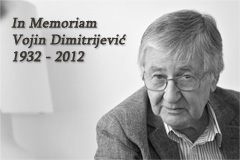Donor: Catholic Relief Service (CRS) and United States Agency for International Development USAID
Duration of the project: October 2002 – May 2003
The Belgrade Centre for Human Rights designed and conducted a comprehensive study on the trafficking of Roma women and children from Serbia (risk and resilience factors).
The study had the following 3 objectives:
- to identify risk factors and potential protections against human trafficking within the Roma population;
- to identify existing gaps in activities to prevent human trafficking;
- to recommend a strategy for preventing and curbing human trafficking. The study focused on the complex social nature of the issue, rather than just its immediately visible symptoms.
Trafficking was analysed in relation to three areas:
- the socio-economic, political, legal, and institutional contexts, including a gender analysis;
- the gaps between existing funding, policy, and programming initiatives; and the knowledge and application of human rights and particularly women’s and children’s rights principles in Serbian society.
The Centre believed that by studying these issues in relation to the existing legal, economic and political frameworks and trends, strategic sociological programming and policy advocacy recommendations could be made to establish a framework for future interventions and activities focusing on preventive action.
The research team conducted their analysis in three ways: a survey of public familiarity with the phenomenon and its public perception; qualitative research on the everyday life and direct experiences of Roma as the potentially the most vulnerable group in Serbia; and familiarisation with existing practices of social reaction to the phenomenon, including a review of anti-trafficking programs and structural shortcomings. The research team conducted 30 interviews with representatives of the key anti-trafficking organisations in Serbia. The team also interviewed the representatives of the Federal and Republic anti-trafficking teams.
The study engaged leading experts to cover aspects of trafficking that have not received proper attention (i.e. public attitudes towards it, the plight of the Roma community as victims, the attitudes of at-risk groups, namely adolescent girls). The study also focused on the development of possible bottom-up and middle-out initiatives that could complement the top-down approach of the government.
The research team solicited assistance from the diplomatic representatives of European countries which are known destinations of trafficked Roma children (i.e. Italy, Austria, France, Germany, and the Netherlands). The research team also made use of Interpol’s materials and assistance in data collection and analysis.







